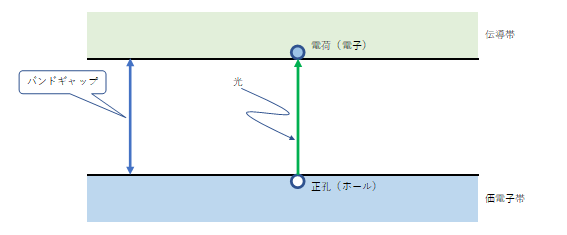Introduction
Nowadays, we often see cameras in various situations.
In everyday life, mobile phones with cameras were released 20 years ago, and it has become commonplace for game consoles and PCs to have cameras.
In addition, it has become commonplace for cars to be equipped with cameras in order to reduce car accidents, and now it has become more difficult to find a car that does not have a camera installed.
The important semiconductor used in these cameras is the image sensor.
Generally, the light that can be captured by a CMOS image sensor is said to be in the range of 360nm to 1100nm, from the visible light region that can be recognized by the human eye to the near-infrared region.
So, why is it possible to capture light from this area?
Let me explain why.
An image sensor converts light into electric charge using a light-receiving element called a photodiode, which is embedded inside the pixel.
Although we rarely see CMOS image sensors these days, CCDs use the same mechanism to convert light into electric charge.
The mechanism that converts this light into electric charge is called the photoelectric effect. There are two types of photoelectric effects: internal photoelectric effects and external photoelectric effects. Image sensors apply the mechanism of internal photoelectric effects.
What is the photoelectric effect?
The photoelectric effect is a phenomenon in which when a material surface is irradiated with light, electrons are emitted from that surface to the outside, or the number of conduction electrons inside the material increases.
Among the photoelectric effects, the external photoelectric effect is a phenomenon in which charges (electrons) held by a substance are released to the outside by the energy of light.
The internal photoelectric effect is a phenomenon in which the energy of light generates charges inside a substance (mainly semiconductors), generating an electromotive force.
In order to cause the internal photoelectric effect, it is necessary to excite electrons from the valence band to the conduction band.
For this purpose, the energy of the light must be greater than or equal to the band gap (also called forbidden band) of the semiconductor.

The relational expression is expressed as follows, where Ep is the optical energy (eV), Eg is the band gap (eV), and λ is the wavelength (nm).
Ep = 1240/λ
Ep > Eg
The calculation for each wavelength λ (nm) is as follows.

Charges (electrons) can be excited from the valence band by irradiating the semiconductor with light that has an energy greater than the band gap of the semiconductor.
In other words, even if you irradiate it with light with an energy below the band gap, you will not be able to excite charges (electrons) from the valence band.
The bandgap of silicon (Si), which is widely used, is approximately 1.1eV, and in order to cause the photoelectric effect in Si-based semiconductors, light energy of 1.1eV or more is required.
Therefore, in order to obtain light energy of 1.1eV or more, the light must have a wavelength of 1100nm or less, and for this reason, image sensors using Si-based semiconductors are designed to capture light of 1100nm or less.
If you select a material with a narrower bandgap, it will be possible to capture light in the mid-infrared to far-infrared range of 1100 nm or more. For example, Ge (germanium) has a value of 0.67 eV, and if applied to the equation above, it will capture light up to 1850 nm. can do.
InGaAs (Indium Gallium Arsenide, also called InGas) is a ternary mixed crystal semiconductor that combines 1.4eV GaAs and 0.36eV InAs, and its bandgap can be changed depending on the composition ratio, allowing you to see the light you want to see. It is used by changing the composition ratio depending on the wavelength.
lastly
I explained how digital cameras and smartphone cameras, which we use casually every day, capture the energy of light and turn it into visible images.
I hope this article will help you better understand CMOS image sensors.
Inquiry
If you are interested in any of the products introduced in this article, please feel free to contact us.
Onsemi Manufacturer information Top
If you want to go back to ONSEMI Manufacturer Information Top, please click below.
